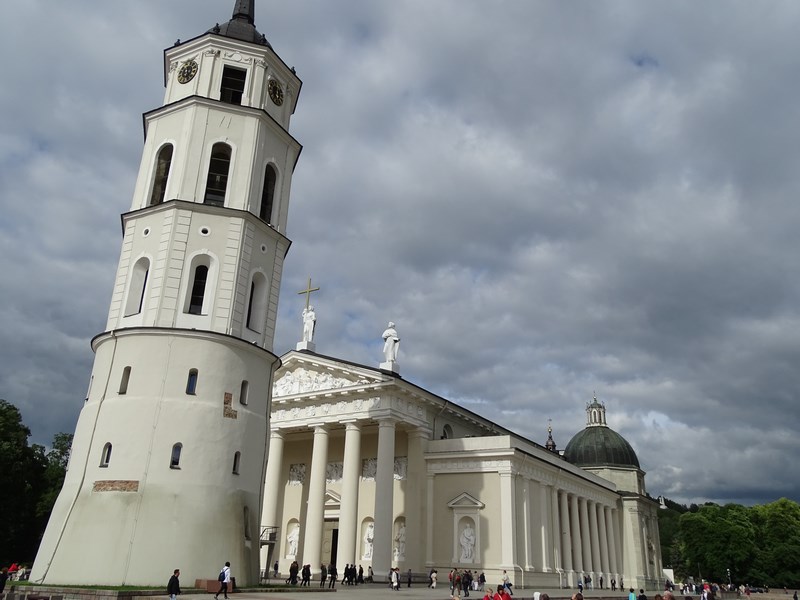Istanbul between Europe and Asia, between history and future.
I should confess from the very beginning that I love history. I started to love history since I was a kid, when I spent so many hours and hours reading about heroes and warriors, defectors and fighters, about magnificent cities and brilliant kingdoms. But I always tried to imagine how they looked like (I guess that’s why I watch historical movies as well)… Sometimes, I managed, sometimes I could not… But since I started to travel, I could see, feel and taste the atmosphere of many of these places which shine in the history books.
Istanbul has been top of my list. I did actually came to see the cathedral which amazed Prince Vladimir’s envoys at such extent that they asked the prince to convert to the orthodox faith. “We know longer knew whether we were in heaven or on earth” they wrote … and actually, I felt more or less the same. However, my biggest discovery was not this church I dreamt of, but actually the diversity and the fact that Istanbul is not a city, it is a dialogue – a dialogue between past and future, between Asian side and European side, between Christianity and Islam… The Blue Mosque and Saint Sofia Cathedral stay face to face, although one is 1000 years older… however, they look as they were always together.
Sometimes when I come to Istanbul (I should confess, I’ve been quite a lot of times), I love to sit between St. Sofia and Blue Mosque and try to imagine the old times… the glory times of Justinian’s Constantinopole, the chariot races around the Hippodrome, the Grand Palace (which meanwhile was replaced by the elegant building of Sultanahmet Mosque), the gold, the richness and the beauty. The movie still goes on in my mind… The Crusaders who are spoiling the beauty, taking with them whatever they could find and the dark period of the decline… How was Constantinopole in the XIV-XVth centuries ? A ghost city ? A city inhabited by just thousands of people in a city which used to host a million, an Imperial Court who lost all the glam ? 1453, fall of Constantinopole signaled a new era… It was a new era, but it was also a period of come back, a period when the old metropolis recovered its shine and glow.
I know people admire the today’s Istanbul as a combination between new and old, history and future. I am usually searching for the past, for the roots, for the stories. I know, everybody goes to see the Archeological Museum or the 1001-nights-like Topkapi Palace with its share fair of intrigues, stories with beautiful princesses and revenging heirs to Otoman throne. Yes, I do enjoy this as well… But I love to discover some hidden alleys, the streets which are going down to Marmaris. Just stroll on these streets with some buildings which you would rather see them in the Victorian London and not in Istanbul. Well, you find them in Istanbul. And gives your discovery another flavour in this multi-faced city.
But the historical Istanbul does not limit to the Historical Peninsula… Go beyond. And don’t think only the uber-touristical spots of Dolmabahce for example. In my last trip, I discovered Fener district. Not for the Fenerbahce team (sorry, fans !), but for the traces of history. Here continues to exist the Orthodox Patriarchy of Constantinopole which, although it lost its power, continues to have a certain influence. I discovered a quiet and traditionalist neighborhood where history is more difficult to trace. I am Romanian, so I was looking for the traces of Prince Dimitrie Cantemir of Moldova. And I discovered them finally… not exactly his palace, but his name which was carried by a café… I learned that his palace was in the patio where now you can sip some coffee, but it was hard to imagine how this place looked like before. However, I was happy to find traces of Romania here … do you need another proof of this cosmopolitan city where so many people met and mingled ? Just to say that few steps further, there is the Bulgarian church which is completely built by iron.
I jump from an idea to another, but actually this is Istanbul. You jump from a place to another, each single corner gives you another perspective, another flavour, another angle. On the same street you find a Venetian cathedral, a mosque, Western clothes stores and Turkish coffees parlours… on the edges, you cannot miss that kebab which actually conquered the world (you go in the historical town of Montecarlo ? You find a kebab place. You stroll the cool commercial streets of Tokyo ? You find kebab, as well). Just take down and up Istiklal Caddesi, the main avenue of the old Pera… Some guides claim that Pera brought modernism to the Ottoman Istanbul and laid the foundations to its today’s cosmopolitanism. Not true… The cultures mingled here for centuries, during the Roman Empire, during the Byzantium and obviously in the first centuries after El Fatih’s conquest. Here you can find the whole world of Balkans meeting the world of Middle East and even further. But Pera added the Western flavour to Istanbul which still survives today.
Should I continue ? I guess everybody will find him- or herself in Istanbul. It will be exotic, but familiar, it will look old, but you will find modernity… just cross the only trans-continental bridges in the world :). And definitely, you will find something which would remember your home country.
Note: This article was published for World Tourism Forum, one of the most prestigious tourism events which is organized in the next few days in Istanbul and where I have the honour to be one of the speakers














Istanbul is one of those destinations I have been dying to go to. Thanks for the post